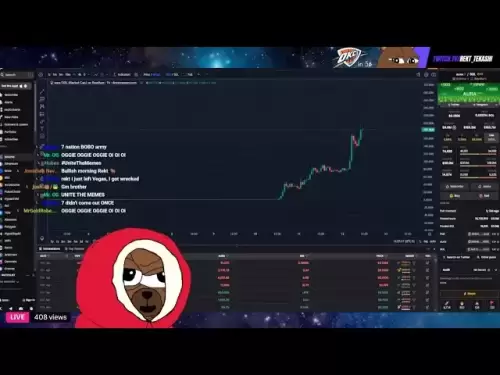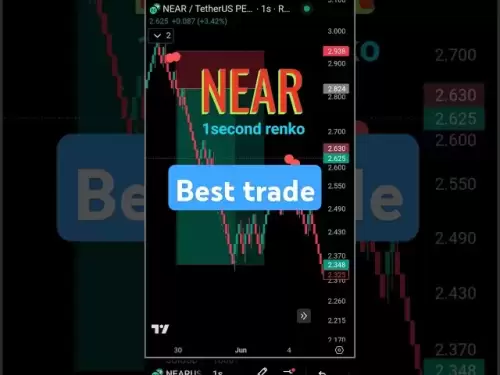-
 Bitcoin
Bitcoin $105,288.6945
-2.61% -
 Ethereum
Ethereum $2,546.9059
-7.84% -
 Tether USDt
Tether USDt $1.0004
0.05% -
 XRP
XRP $2.1438
-4.68% -
 BNB
BNB $653.2251
-1.80% -
 Solana
Solana $146.3449
-8.07% -
 USDC
USDC $0.9997
0.01% -
 Dogecoin
Dogecoin $0.1778
-5.94% -
 TRON
TRON $0.2688
-2.27% -
 Cardano
Cardano $0.6373
-7.04% -
 Hyperliquid
Hyperliquid $41.2776
-4.37% -
 Sui
Sui $3.0223
-9.71% -
 Chainlink
Chainlink $13.3280
-7.77% -
 Bitcoin Cash
Bitcoin Cash $430.6921
-2.12% -
 UNUS SED LEO
UNUS SED LEO $9.0426
1.98% -
 Avalanche
Avalanche $19.2275
-8.92% -
 Stellar
Stellar $0.2600
-5.55% -
 Toncoin
Toncoin $2.9984
-6.13% -
 Shiba Inu
Shiba Inu $0.0...01195
-5.71% -
 Hedera
Hedera $0.1566
-7.37% -
 Litecoin
Litecoin $84.6896
-5.28% -
 Polkadot
Polkadot $3.8188
-6.28% -
 Ethena USDe
Ethena USDe $1.0004
0.00% -
 Monero
Monero $311.9801
-3.66% -
 Dai
Dai $0.9998
0.00% -
 Bitget Token
Bitget Token $4.5149
-4.09% -
 Uniswap
Uniswap $7.4602
-6.13% -
 Pepe
Pepe $0.0...01088
-11.16% -
 Aave
Aave $280.9076
-8.02% -
 Pi
Pi $0.5699
-8.88%
How to read the MFI fund flow indicator? Can it more accurately judge the main trend when combined with OBV?
MFI, a volume-weighted RSI, signals overbought above 80 and oversold below 20; combined with OBV, it confirms trends and potential reversals in crypto trading.
Jun 12, 2025 at 06:14 am
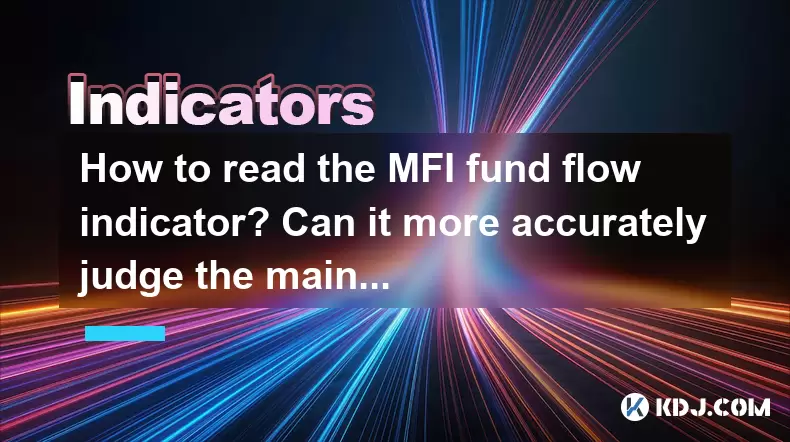
Understanding the MFI Fund Flow Indicator
The Money Flow Index (MFI) is a momentum indicator that measures the inflow and outflow of money into a security over a specific period. It is often referred to as the volume-weighted Relative Strength Index (RSI), as it incorporates both price and volume data to provide a more comprehensive view of market trends. The MFI is typically calculated over a 14-day period, but this can be adjusted based on the trader's preference.
To calculate the MFI, you first need to determine the typical price for each day, which is the average of the high, low, and closing prices. Then, you multiply this typical price by the volume to get the raw money flow. The money flow is considered positive if the typical price is higher than the previous day's typical price, and negative if it is lower. The ratio of positive money flow to negative money flow over a specified period is then used to calculate the MFI, which ranges from 0 to 100.
Interpreting the MFI
The MFI can be used to identify overbought and oversold conditions in the market. An MFI reading above 80 suggests that the asset may be overbought, indicating a potential reversal or pullback in price. Conversely, an MFI reading below 20 suggests that the asset may be oversold, indicating a potential upward price movement. Traders often look for divergences between the MFI and price action as a signal of potential trend reversals. For example, if the price is making new highs but the MFI is not, it could indicate weakening momentum and a possible bearish reversal.
In addition to overbought and oversold signals, the MFI can also be used to confirm trends. If the MFI is trending higher along with the price, it suggests that the bullish trend is strong and likely to continue. Similarly, if the MFI is trending lower along with the price, it suggests that the bearish trend is strong and likely to continue.
Combining MFI with OBV for Enhanced Analysis
The On-Balance Volume (OBV) indicator is another tool that traders use to assess the strength of a trend based on volume. OBV is calculated by adding the volume on up days and subtracting the volume on down days. This cumulative total is then plotted as a line, which can help traders identify whether volume is confirming the price trend.
When combining MFI and OBV, traders can gain a more comprehensive understanding of the market's direction. If both the MFI and OBV are trending in the same direction as the price, it suggests a strong and confirmed trend. For example, if the price is trending upwards, and both the MFI and OBV are also trending upwards, it indicates strong bullish momentum.
Conversely, if the MFI and OBV are diverging from the price, it could signal a potential trend reversal. For instance, if the price is trending upwards but the MFI and OBV are trending downwards, it suggests that the bullish trend may be losing steam and a bearish reversal could be imminent.
Practical Application of MFI and OBV in Trading
To apply MFI and OBV in trading, follow these steps:
- Select a cryptocurrency pair: Choose the cryptocurrency pair you want to analyze. For example, BTC/USDT.
- Set up the indicators: Add the MFI and OBV indicators to your charting platform. Most platforms allow you to customize the period for the MFI, typically set to 14 days.
- Analyze the MFI: Look for overbought and oversold conditions. An MFI above 80 indicates overbought conditions, while an MFI below 20 indicates oversold conditions.
- Analyze the OBV: Observe the OBV line to see if it is trending in the same direction as the price. An upward trending OBV confirms a bullish trend, while a downward trending OBV confirms a bearish trend.
- Look for divergences: Check for divergences between the MFI, OBV, and price. If the price is making new highs but the MFI and OBV are not, it could signal a bearish reversal. Conversely, if the price is making new lows but the MFI and OBV are not, it could signal a bullish reversal.
- Make trading decisions: Based on your analysis, decide whether to enter a long or short position. For example, if the MFI is below 20, the OBV is trending upwards, and the price is starting to rise, it could be a good time to enter a long position.
Limitations and Considerations
While combining MFI and OBV can provide valuable insights, it is important to consider their limitations. Both indicators are lagging indicators, meaning they are based on past data and may not always predict future price movements accurately. Additionally, false signals can occur, especially in volatile markets.
It is also crucial to use MFI and OBV in conjunction with other technical analysis tools and fundamental analysis to make well-informed trading decisions. No single indicator should be relied upon exclusively, as the cryptocurrency market is influenced by a wide range of factors, including news events, regulatory changes, and market sentiment.
Frequently Asked Questions
Q: Can the MFI be used to predict price reversals?
A: While the MFI can indicate overbought and oversold conditions, which may precede price reversals, it is not a definitive predictor. Traders should look for confirmation from other indicators and market factors before making trading decisions based on MFI signals.
Q: How often should I adjust the MFI period?
A: The standard period for the MFI is 14 days, but traders can adjust it based on their trading strategy. Shorter periods, such as 7 days, can provide more sensitive signals, while longer periods, such as 21 days, can provide more stable signals. The choice depends on the trader's time frame and trading style.
Q: Is it better to use MFI or OBV alone, or should they always be used together?
A: Both MFI and OBV can be effective when used alone, but using them together can provide a more comprehensive analysis. MFI focuses on price and volume momentum, while OBV focuses solely on volume trends. Combining them can help confirm trends and identify potential reversals more accurately.
Q: Can MFI and OBV be used for all cryptocurrencies?
A: Yes, MFI and OBV can be applied to any cryptocurrency pair. However, the effectiveness of these indicators may vary depending on the liquidity and volatility of the specific cryptocurrency. It is important to test these indicators on historical data for the specific cryptocurrency you are trading to understand their reliability.
Disclaimer:info@kdj.com
The information provided is not trading advice. kdj.com does not assume any responsibility for any investments made based on the information provided in this article. Cryptocurrencies are highly volatile and it is highly recommended that you invest with caution after thorough research!
If you believe that the content used on this website infringes your copyright, please contact us immediately (info@kdj.com) and we will delete it promptly.
- Bitwise CEO Predicts Bitcoin Holders Will Stop Selling Once Price Surpasses $130,000
- 2025-06-14 01:30:12
- Neo Pepe’s Revolution Begins
- 2025-06-14 01:30:12
- Aptos (APT) Token Unlock – June 12, 2025
- 2025-06-14 01:25:12
- Aptos (APT) Token Unlock – June 12, 2025
- 2025-06-14 01:25:12
- Ruvi AI Emerges as a Potential Rival to Cardano (ADA)
- 2025-06-14 01:20:12
- Market Capitalization Often Confuses Casual Investors, and Detractors Have Weaponized It Against Bullish XRP Price Predictions
- 2025-06-14 01:20:12
Related knowledge
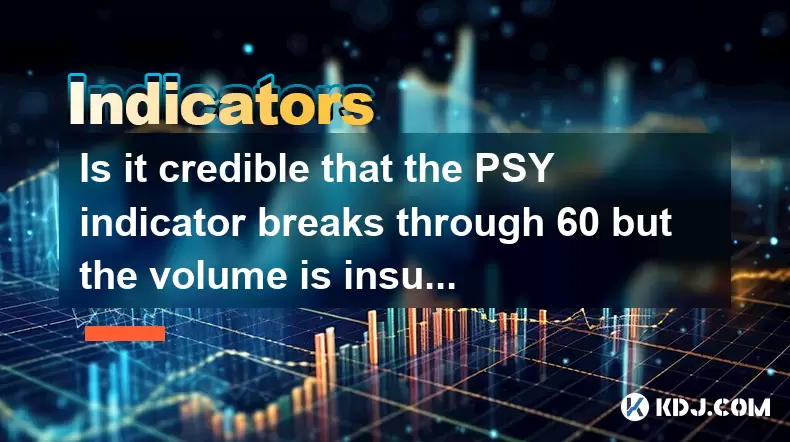
Is it credible that the PSY indicator breaks through 60 but the volume is insufficient?
Jun 14,2025 at 12:14am
Understanding the PSY Indicator in Cryptocurrency TradingThe Psychological Line (PSY) indicator is a momentum oscillator used primarily to measure the sentiment of traders and investors in financial markets, including the cryptocurrency space. It calculates the ratio of days where prices closed higher versus lower over a specified period, typically 12 o...
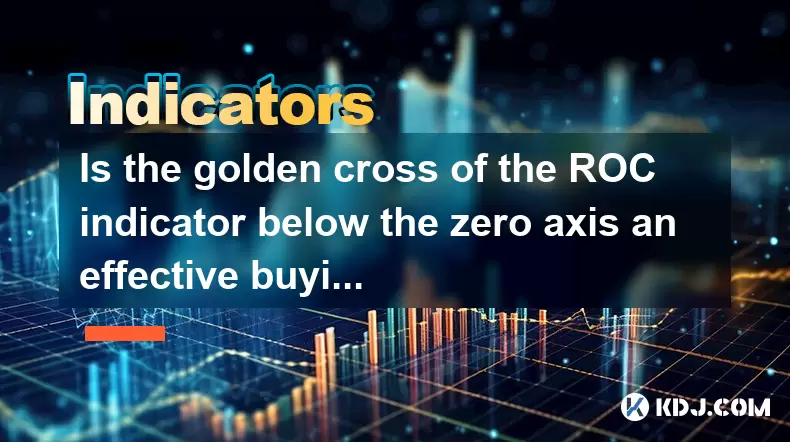
Is the golden cross of the ROC indicator below the zero axis an effective buying point?
Jun 14,2025 at 01:29am
Understanding the ROC Indicator and Its SignificanceThe Rate of Change (ROC) indicator is a momentum oscillator used in technical analysis to measure the percentage change in price between the current closing price and the closing price from a set number of periods ago. This tool helps traders assess the speed at which prices are changing, offering insi...

Will the RSI fall after the top divergence? How to improve the judgment accuracy?
Jun 13,2025 at 11:21pm
Understanding RSI and Top Divergence in Cryptocurrency TradingThe Relative Strength Index (RSI) is a momentum oscillator widely used in cryptocurrency trading to measure the speed and change of price movements. It typically ranges from 0 to 100, with levels above 70 considered overbought and below 30 considered oversold. In crypto markets, where volatil...
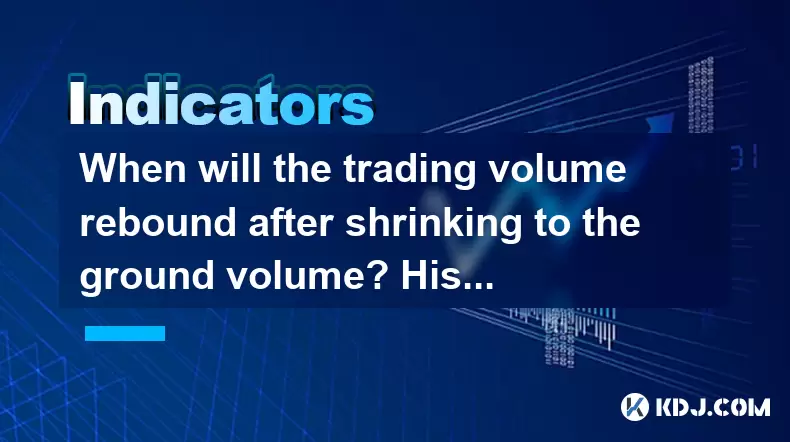
When will the trading volume rebound after shrinking to the ground volume? Historical percentile comparison method
Jun 13,2025 at 03:36pm
Understanding the Ground Volume Concept in Cryptocurrency MarketsIn cryptocurrency trading, 'ground volume' refers to a period when the trading volume of a particular asset or market drops significantly, often reaching multi-month or even multi-year lows. This phenomenon typically signals a lack of interest from traders and investors, suggesting that th...
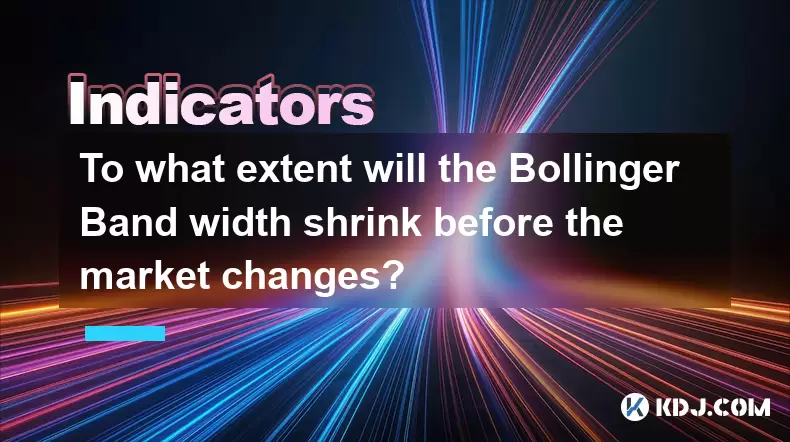
To what extent will the Bollinger Band width shrink before the market changes?
Jun 13,2025 at 06:35pm
Understanding the Bollinger Band Width and Its SignificanceThe Bollinger Band width is a critical technical analysis tool used in cryptocurrency trading to measure market volatility. It consists of three lines: a simple moving average (SMA), an upper band, and a lower band. The distance between the upper and lower bands reflects the level of volatility ...
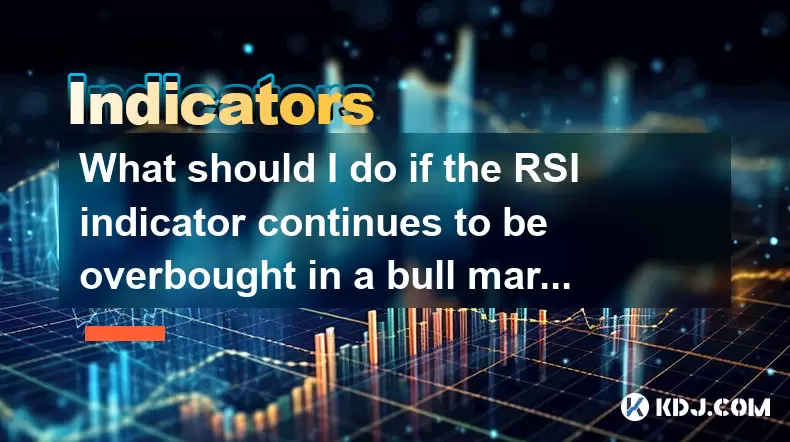
What should I do if the RSI indicator continues to be overbought in a bull market? How to adjust the overbought zone threshold?
Jun 13,2025 at 05:57pm
Understanding the RSI Indicator in a Bull MarketThe Relative Strength Index (RSI) is a momentum oscillator commonly used by traders to assess overbought or oversold conditions of an asset. In a bull market, especially within the cryptocurrency space, prices can remain elevated for extended periods. This often leads to the RSI indicator staying in the ov...

Is it credible that the PSY indicator breaks through 60 but the volume is insufficient?
Jun 14,2025 at 12:14am
Understanding the PSY Indicator in Cryptocurrency TradingThe Psychological Line (PSY) indicator is a momentum oscillator used primarily to measure the sentiment of traders and investors in financial markets, including the cryptocurrency space. It calculates the ratio of days where prices closed higher versus lower over a specified period, typically 12 o...

Is the golden cross of the ROC indicator below the zero axis an effective buying point?
Jun 14,2025 at 01:29am
Understanding the ROC Indicator and Its SignificanceThe Rate of Change (ROC) indicator is a momentum oscillator used in technical analysis to measure the percentage change in price between the current closing price and the closing price from a set number of periods ago. This tool helps traders assess the speed at which prices are changing, offering insi...

Will the RSI fall after the top divergence? How to improve the judgment accuracy?
Jun 13,2025 at 11:21pm
Understanding RSI and Top Divergence in Cryptocurrency TradingThe Relative Strength Index (RSI) is a momentum oscillator widely used in cryptocurrency trading to measure the speed and change of price movements. It typically ranges from 0 to 100, with levels above 70 considered overbought and below 30 considered oversold. In crypto markets, where volatil...

When will the trading volume rebound after shrinking to the ground volume? Historical percentile comparison method
Jun 13,2025 at 03:36pm
Understanding the Ground Volume Concept in Cryptocurrency MarketsIn cryptocurrency trading, 'ground volume' refers to a period when the trading volume of a particular asset or market drops significantly, often reaching multi-month or even multi-year lows. This phenomenon typically signals a lack of interest from traders and investors, suggesting that th...

To what extent will the Bollinger Band width shrink before the market changes?
Jun 13,2025 at 06:35pm
Understanding the Bollinger Band Width and Its SignificanceThe Bollinger Band width is a critical technical analysis tool used in cryptocurrency trading to measure market volatility. It consists of three lines: a simple moving average (SMA), an upper band, and a lower band. The distance between the upper and lower bands reflects the level of volatility ...

What should I do if the RSI indicator continues to be overbought in a bull market? How to adjust the overbought zone threshold?
Jun 13,2025 at 05:57pm
Understanding the RSI Indicator in a Bull MarketThe Relative Strength Index (RSI) is a momentum oscillator commonly used by traders to assess overbought or oversold conditions of an asset. In a bull market, especially within the cryptocurrency space, prices can remain elevated for extended periods. This often leads to the RSI indicator staying in the ov...
See all articles





















